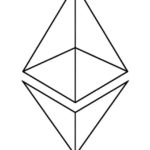Solana’s SIMD-228 Proposal Fails to Reduce Inflation Rate
The SIMD-228 proposal, aiming to cut Solana’s inflation rate by 80%, did not pass. It needed 66.67% approval but only got 61.39%. This was the largest crypto governance vote ever, with 74% turnout.
Smaller validators, with 500,000 SOL or less, mostly voted against it. They feared it would hurt their profits. Larger validators supported it.This shows a divide in the network.
Currently, Solana burns fees and gives staking rewards. Fewer tokens are burned as transaction costs drop.Staking rewards keep adding new SOL. SIMD-228 wanted to lower staking rewards to slow SOL supply growth.This could have raised SOL’s value. But it would have made it hard for smaller validators to stay profitable. If many left, Solana’s decentralization could weaken.
While SIMD-228 failed, SIMD-123 passed with 75% support. It lets validators share rewards more openly. Network users prefer changing validator incentives over lowering inflation.
Under SIMD-228, inflation would have fallen below 1% at a 65% staking rate. But it could have hurt smaller validators.This could weaken Solana’s stability.
Instead, SIMD-123 passed. It allows validators to split earnings with stakeholders. This shows users want to change validator incentives.
High network activity burns more fees, controlling inflation. But with lower fees, fewer tokens are removed. this keeps inflation at 4.7%. The proposal would have made it hard for small validators to stay in business. This could harm long-term stability.
Despite the setback, the community is still working on improving the network. They seek a balance between fees and rewards.the goal is to keep the network strong and fair for all.








